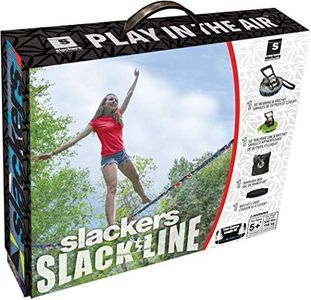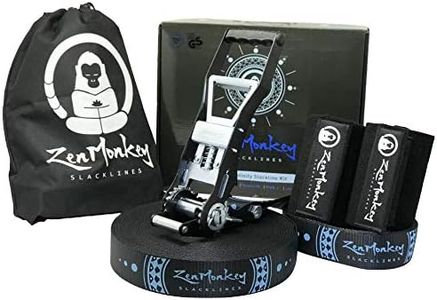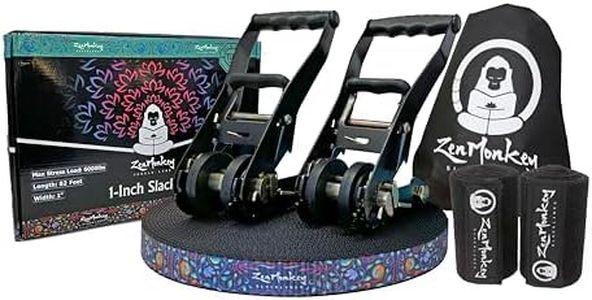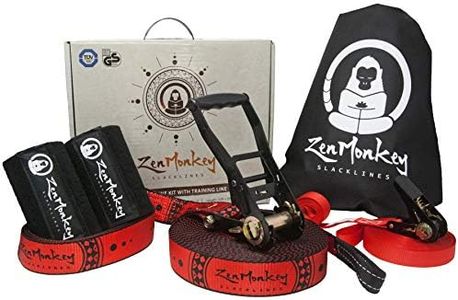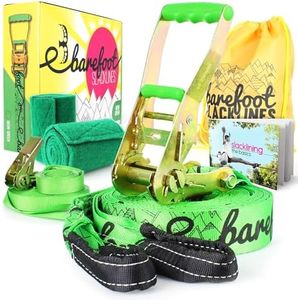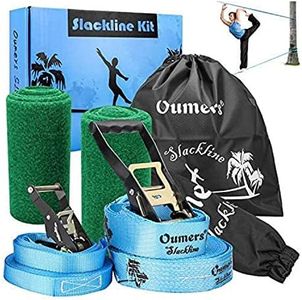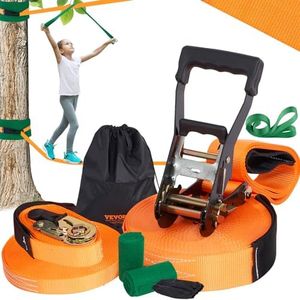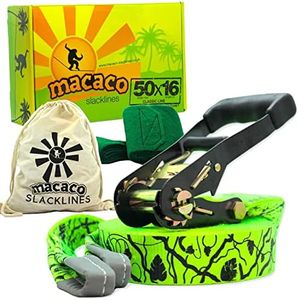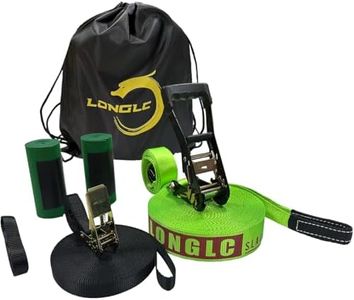We Use CookiesWe use cookies to enhance the security, performance,
functionality and for analytical and promotional activities. By continuing to browse this site you
are agreeing to our privacy policy
10 Best Slackline Kits
From leading brands and best sellers available on the web.#1
Winner
Buying Guide for the Best Slackline Kits
Choosing the right slackline kit is all about matching your needs and skill level with the features that make practice safe and enjoyable. Whether you're a beginner hoping to balance for the first time or an experienced slackliner looking to learn tricks, understanding the main aspects of a slackline kit will help you make a decision that best fits your goals. It's important to consider where you'll set up your slackline, how you'll use it, and what will help you progress safely and have fun.Length of SlacklineThe length of a slackline is the distance between the two anchor points and directly affects the difficulty and versatility of your setup. Shorter lines (roughly 10-15 meters) have less sag and bounce, making them ideal for beginners or those training in small areas. Medium lengths (15-25 meters) suit most users, offering more challenge while still being manageable. Longer lines (over 25 meters) are best for experienced slackliners aiming for advanced tricks or longer walks. To choose the best length, consider your skill level, available space, and future progression goals.
Width of SlacklineSlacklines commonly come in two widths, usually around 1 inch (2.5 cm) or 2 inches (5 cm). Wider slacklines (2 inches) provide more surface area underfoot, which helps beginners with balance and stability, and is often used for tricklining. Narrower slacklines (1 inch) are preferred by advanced users focusing on longlining or highlining, as they allow for more subtle foot adjustments and a greater challenge. Think about whether stability for easy walking or versatility for progression is more important to you when picking a width.
Material Quality and Webbing TypeThe material and weave of the slackline webbing determine its stretch, grip, and overall feel. Some are tightly woven for firmness and low stretch, which is helpful for beginners needing more stability. Others are looser, making the line bouncier and more elastic for tricks and dynamic movement. The texture also affects grip—rougher surfaces prevent slipping but can be tough on bare feet, while smoother lines are more comfortable but can be slippery. Choose the webbing type based on your comfort preferences and your desired balance between control and bounce.
Tensioning SystemMost slackline kits use either a ratchet or primitive (carabiner and loop) system to tighten the line between two anchors. Ratchets are user-friendly and allow quick, tight setups, making them great for beginners and casual users. Primitive systems are lightweight, versatile, and preferred by those with more experience who want precise control over tension. Your choice depends on whether convenience or fine-tuning is more important for your setup style.
Anchor Protection and Tree-Friendly FeaturesSlacklining often involves anchoring between two trees, so it's essential to protect both the trees and your gear. Kits with wide anchor slings, protective tree pads, or sleeves help prevent damage to bark and enhance kit longevity. If you’ll be slacklining in parks or shared spaces, or want to minimize your ecological footprint, always opt for kits that prioritize tree protection.
Included AccessoriesMany slackline kits come with extra features, such as training lines (handholds above the main line), carrying bags, setup guides, or spare parts. Training lines are very helpful for beginners who need assistance balancing, while setup guides make first-time setup easier. When choosing a kit, think about what extras might support your learning curve or make setting up and transporting the line more convenient.
